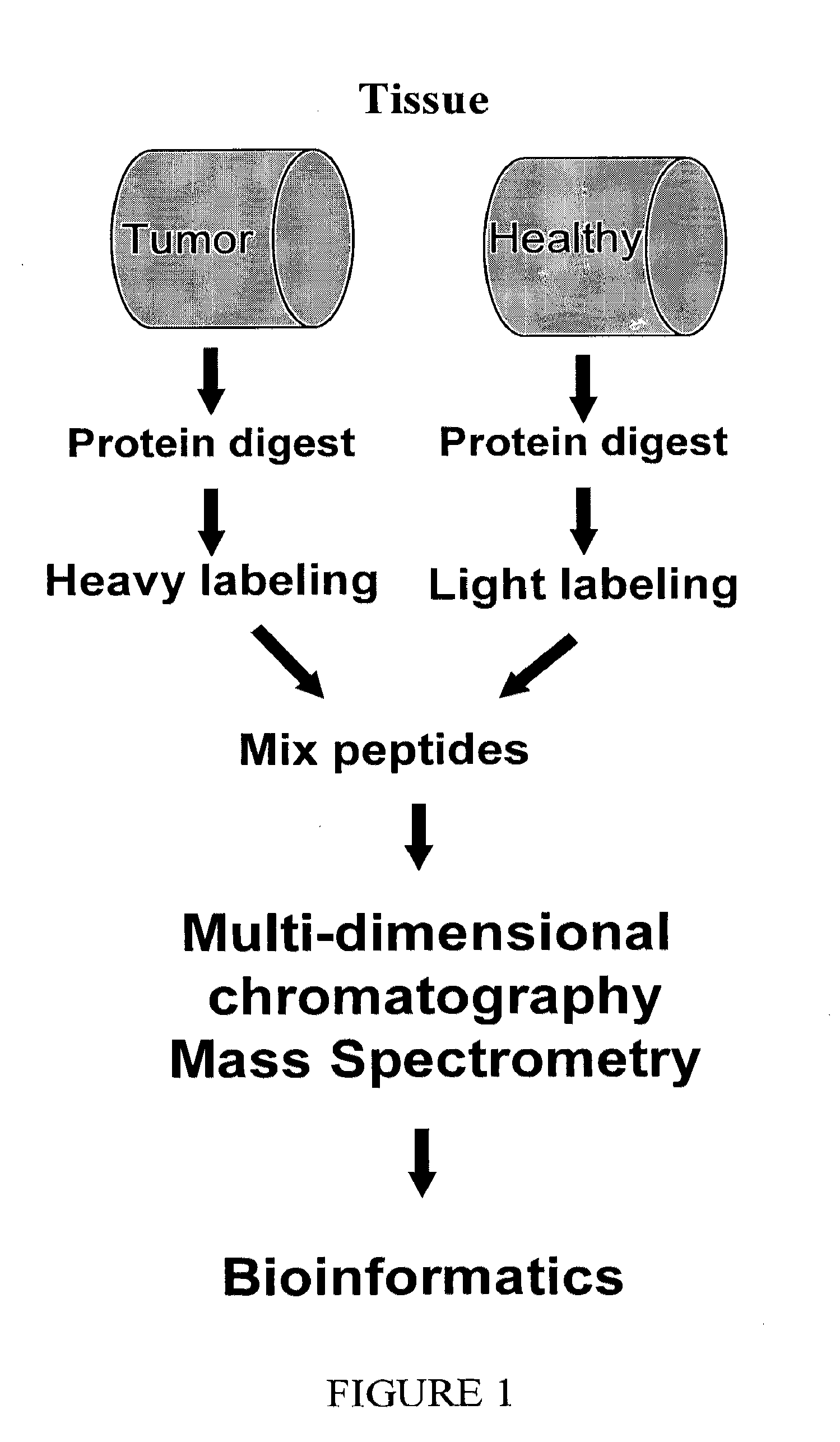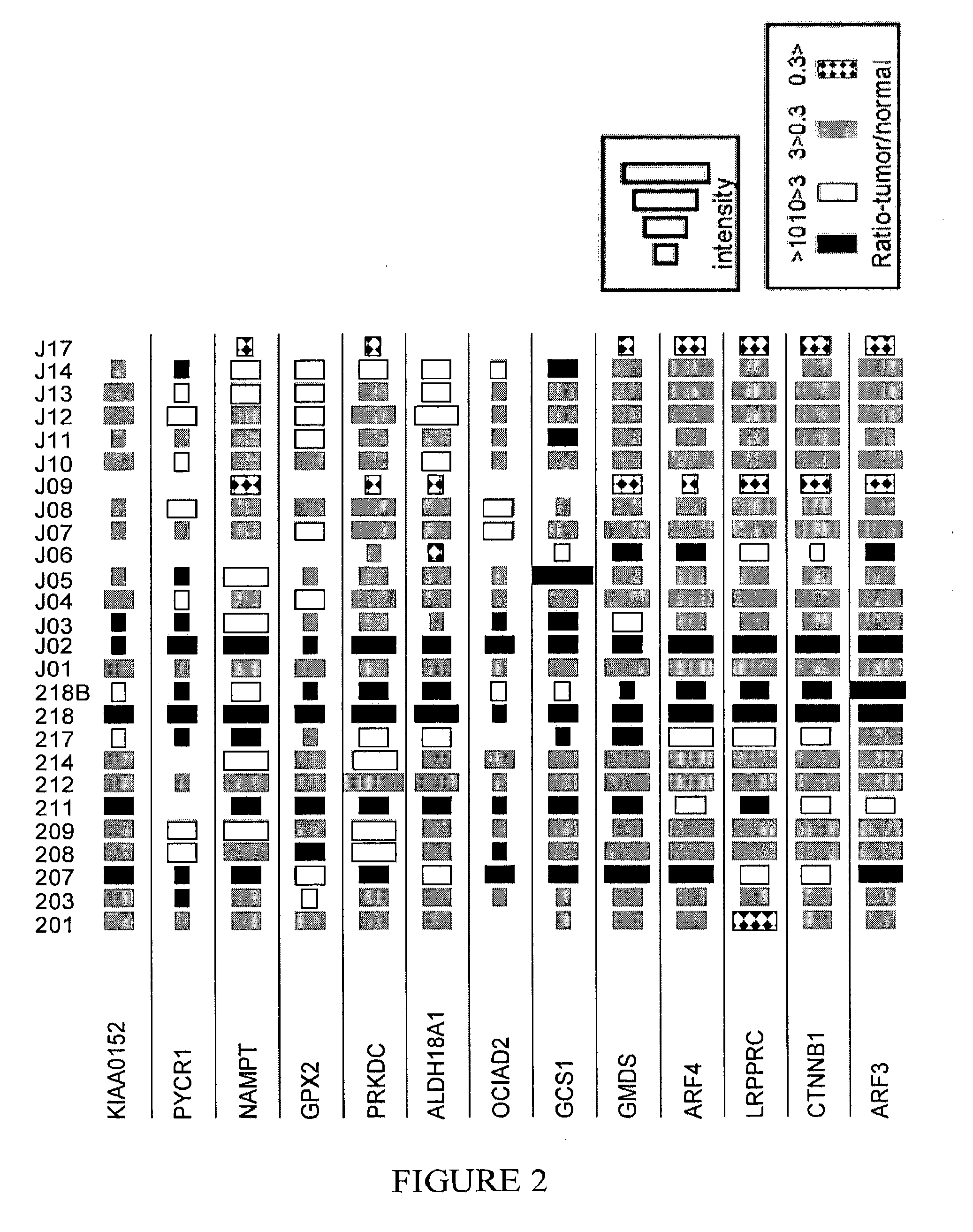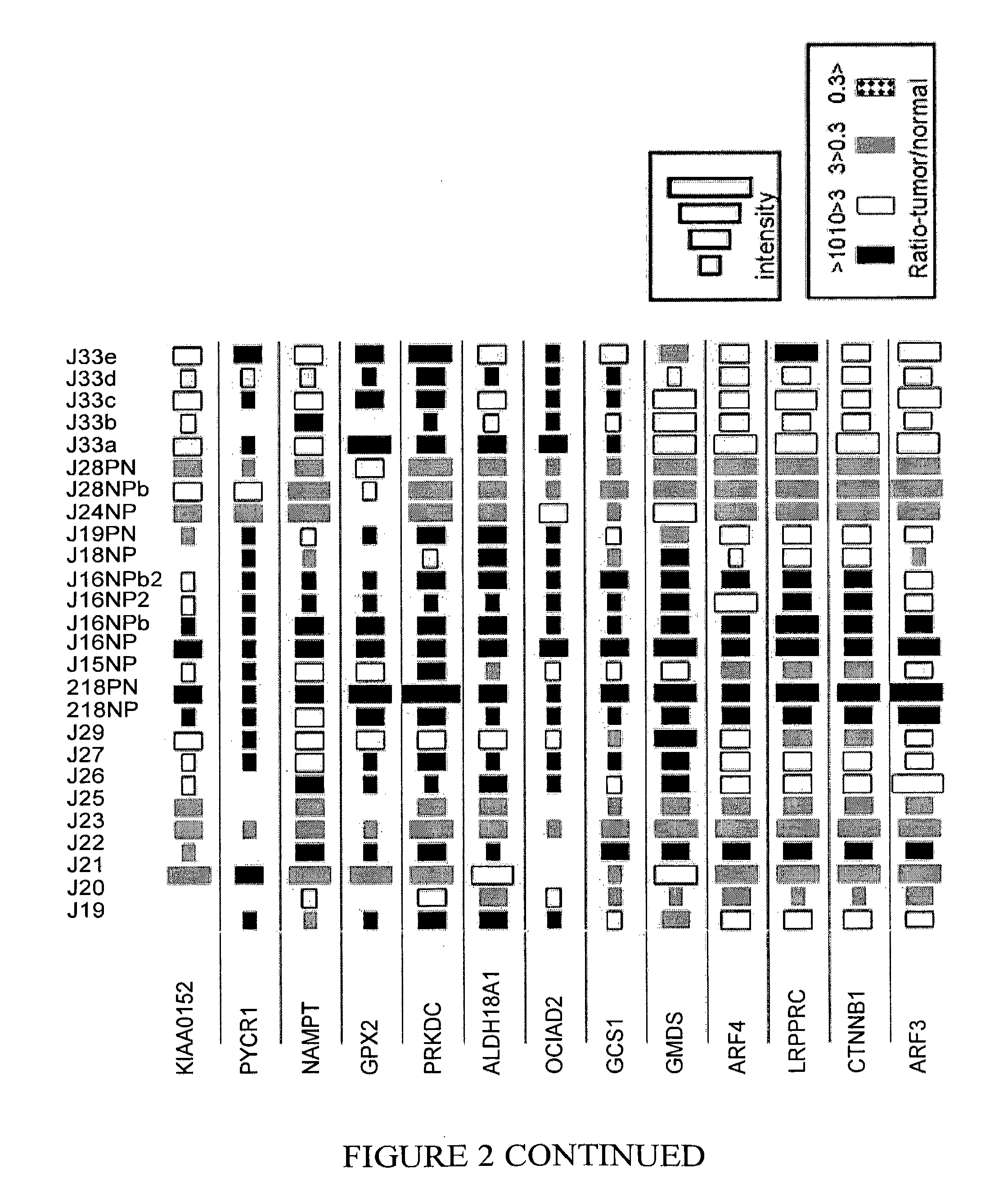Markers for cancer detection
a cancer and marker technology, applied in the field of cancer detection markers, can solve the problems of poor patient prognosis, uncomfortable, expensive,
- Summary
- Abstract
- Description
- Claims
- Application Information
AI Technical Summary
Benefits of technology
Problems solved by technology
Method used
Image
Examples
example 1
Clinical Characteristics of Patients Undergoing Surgical Gastrointestinal Re-Sectioning
[0203]The entire protein repertoires of healthy and diseased gastrointestinal tissues were analyzed from samples obtained from greater than 50 patients undergoing surgery for colorectal cancer.
[0204]The clinical characteristics of the patients studied are provided in Table 2.
TABLE 2PatientAge atNo.DiagnosisGenderAppearanceDiagnosisTNMStageGrade20178MprimaryAdeno-T3N1M0IIIhighcarcinoma20281FprimaryMucinousT3N1IIIlowadeno-carcinoma20385MprimaryAdeno-T3N0M0IIhighcarcinoma20571FprimaryAdeno-T3N1M0IIIhighcarcinoma20781FprimaryAdeno-T3N2IIIhighcarcinoma20878MprimaryAdeno-T3N2M1IVhighcarcinoma20971MprimaryAdeno-T3N0M1IIhighcarcinoma21157FprimaryAdeno-T2N0M0Iintermedcarcinoma21250FprimaryAdeno-T3N1M0IIIhighcarcinoma21454FprimaryAdeno-T3N1M0IIIhighcarcinoma21777FLocalAdeno-T3N0M0IIhighrecurrancecarcinoma21879MprimaryAdeno-T3N2M1IVlow(T + P + N)carcinoma21960MprimaryAdeno-T3N1M0IIIhighcarcinoma22073Mprimary...
example 2
Identification of a Group of Protein Markers that are Found in Polyps and in Advanced Stages of Colorectal Cancer
[0205]Table 3 lists proteins that were observed to be highly expressed in polyps, as well as in early and advanced stages of various colorectal cancers. As shown in Table 3 and in FIG. 2, in a large number of patients, the expression level of these proteins in polyps or cancerous tissue was at least 3 times greater than the expression level in healthy tissue from the same patient. Similarly, few if any, of the patients exhibited decreased expression levels of the same proteins in polyps or cancerous tissue as compared to the corresponding level in healthy tissue from the same patient. That is, a ratio of protein expression (polyps / tumor vs healthy tissue from the same patient), that was less than 1:3, was rarely observed. Accordingly, a diagnostic array of reagents directed to detection of at least some of the proteins in this group may be used as a general screening test...
example 3
Identification of a Group of Protein Markers that are More Highly Expressed in Polyps than in Advanced Stages of Colorectal Cancer
[0206]Table 4 lists proteins that were observed to be highly expressed in polyps, whereas in more advanced stages of colorectal cancer these proteins tended to have decreased levels of expression. Accordingly, a diagnostic array of reagents directed to detection of at least some of the proteins in this group may be used as a screening test for very early detection of colorectal cancer. Such a screening test could identify susceptible at-risk individuals, even prior to the stage at which polyp visualization is possible by endoscopic techniques.
TABLE 4Protein(IPI Acc. No.)nBigTumornSmallTumornBigPolypnSmallPolypCPT2 Carnitine O-65120palmitoyltransferase 2,mitochondrial precursor(IPI00012912)ARL1 ADP-ribosylation factor-61120like protein 1(IPI00219518)PFKL Isoform 1 of 6-62110phosphofructokinase, liver type(IPI00332371)GOT2 Aspartate63110aminotransferase, mi...
PUM
| Property | Measurement | Unit |
|---|---|---|
| nucleic acid hybridization assay | aaaaa | aaaaa |
| fluorescent | aaaaa | aaaaa |
Abstract
Description
Claims
Application Information
 Login to View More
Login to View More - R&D
- Intellectual Property
- Life Sciences
- Materials
- Tech Scout
- Unparalleled Data Quality
- Higher Quality Content
- 60% Fewer Hallucinations
Browse by: Latest US Patents, China's latest patents, Technical Efficacy Thesaurus, Application Domain, Technology Topic, Popular Technical Reports.
© 2025 PatSnap. All rights reserved.Legal|Privacy policy|Modern Slavery Act Transparency Statement|Sitemap|About US| Contact US: help@patsnap.com



